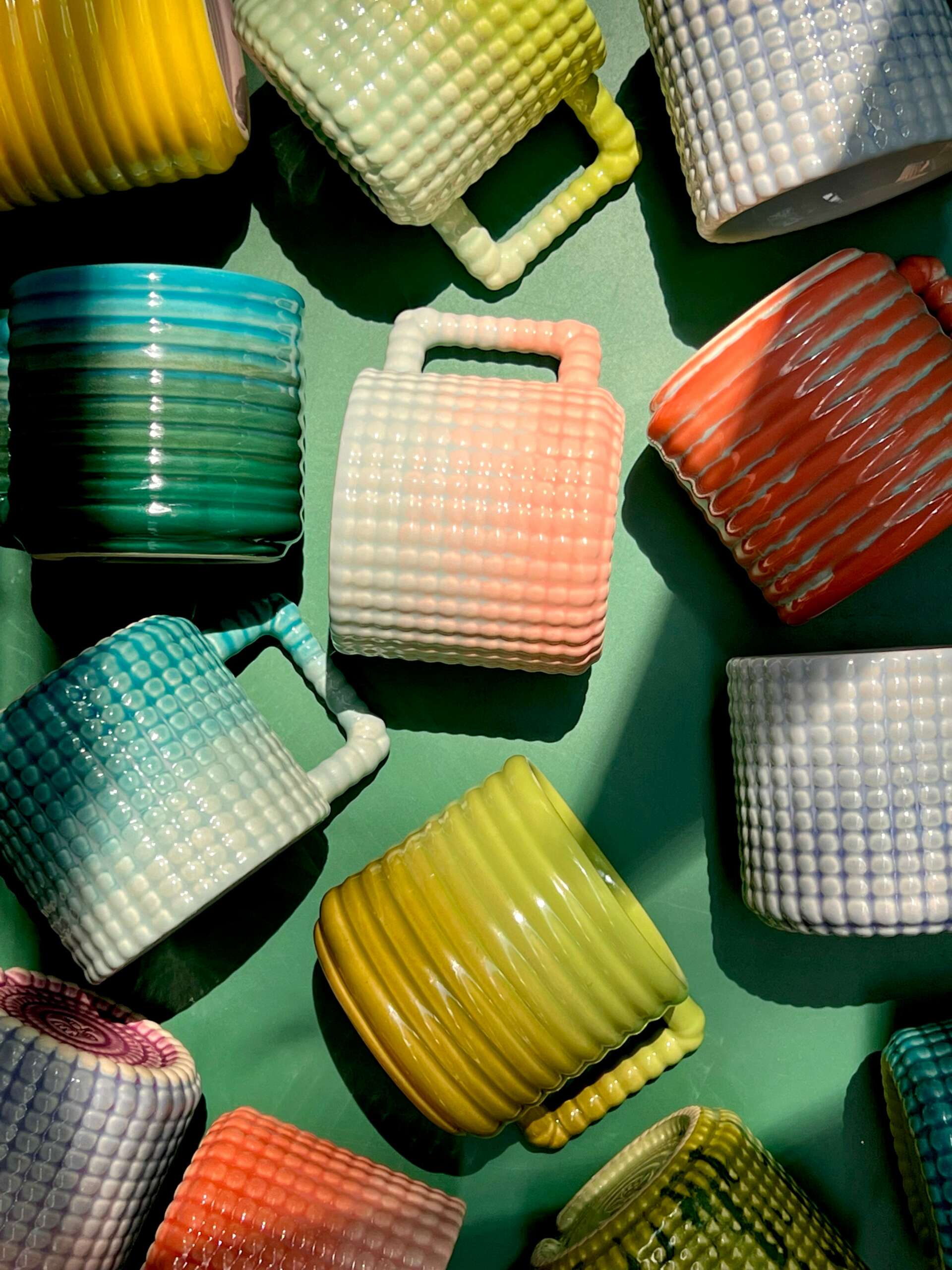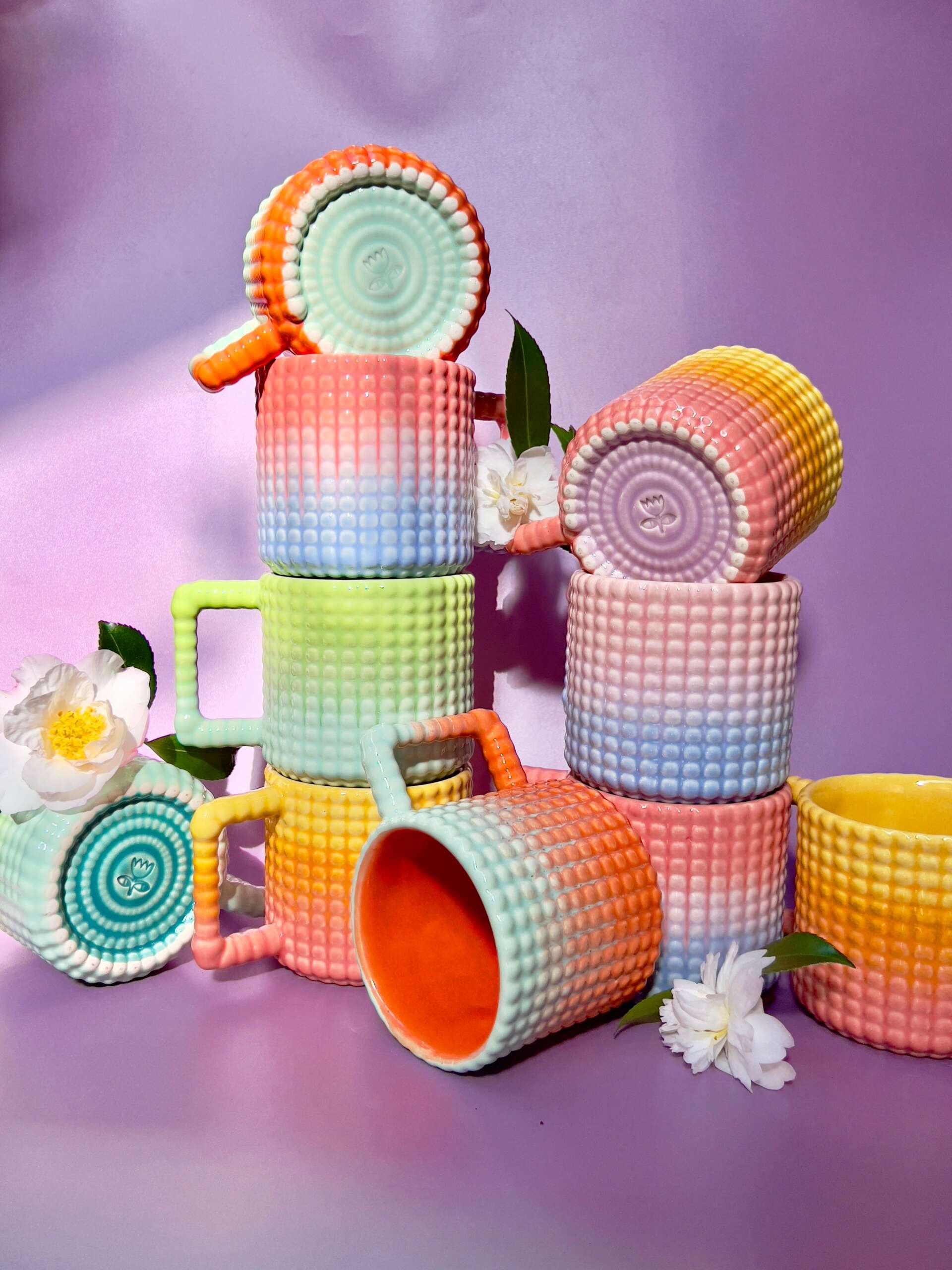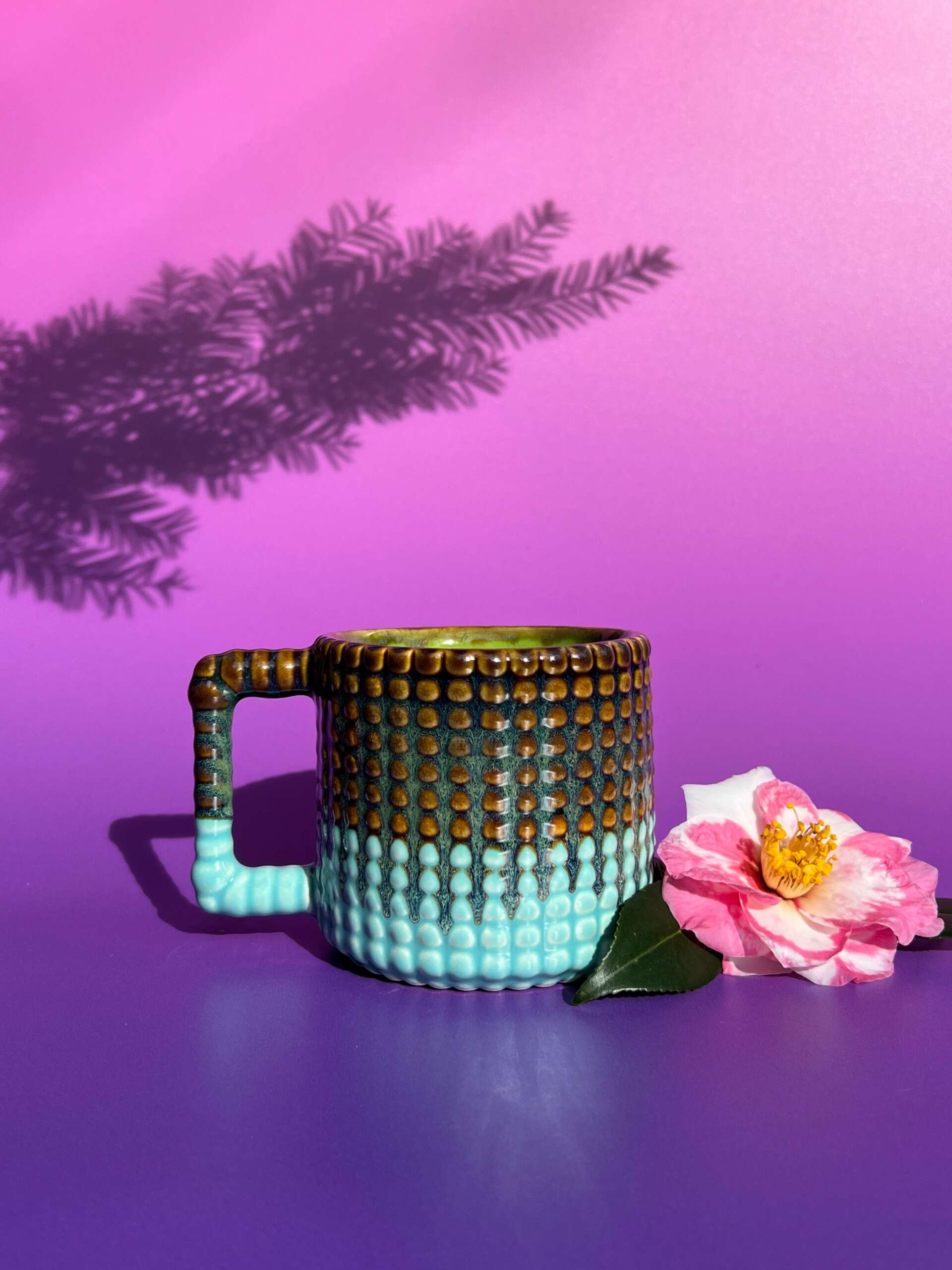Alright – so today we’ve got the honor of introducing you to Valerie & Matt Molnar & Spahr. We think you’ll enjoy our conversation, we’ve shared it below.
Valerie & Matt , thanks for taking the time to share your stories with us today How did you learn to do what you do? Knowing what you know now, what could you have done to speed up your learning process? What skills do you think were most essential? What obstacles stood in the way of learning more?
Matt’s background is in sculpture and Val’s is in painting. Both of us taught at a university for a decade before deciding to leave academia and our installation based studio practice. We wanted to shift to making functional objects and we had a passion for plants. We always had wanted to create planters with proper drainage for our propagation efforts and this was our entry into ceramics. Matt had an understanding of mold making from his background so we started CNC routing planters into plaster blocks that we had initially designed on the computer. We love taking machines or systems and finding different ways to use them. The original pieces that were CNC routed had super fun textures that we were able to make with the rough passes of the router. We would ask the machine to go vertically, or plunge, or spiral in order to carve out the form. In these cases there was no original physical form- they were designed on the computer then routed so we would only get to hold the form once it was cast in clay. It took a bit longer for the glazes to fall into place in a way where the pieces eventually felt like OUR work. The chemical reactions in the kiln meant a lot of glazes were applied in one color and would come out another. We began with a dipping method but over time we discovered that brushing on glazes that had a simple base but was colored with mason stains allowed for color mixing and being able to see an approximation of the color as it went on the surface before firing.


Valerie & Matt , love having you share your insights with us. Before we ask you more questions, maybe you can take a moment to introduce yourself to our readers who might have missed our earlier conversations?
We are Matt and Val! Two best buddies who have collaborated on many projects since 2012 but none as favorite as People Via Plants, our functional small batch slip cast ceramics small business. We both moved to Richmond VA in 2005(Matt), and 2006(Val) for our MFAs. We love color and texture and find lots of inspiration in mid century design, flowers, sunsets, rainbows and music. We started off not knowing anything other than we wanted to start a ceramics business. We wanted to work for ourselves and make a functional product. We didn’t know anything about running a business or how to make ceramics or how to market on social media. Our first pots were fired at a local community kiln, we sold those off of our brand new instagram account and at local markets, made enough to buy a kiln off of craigslist, kept doing until we could trade that in for a new kiln and lots of other tools to help us. Now we’re about to break ground on a new studio we are building for ourselves.
We truly love what we do. This business especially has shown us a different kind of community, being able to connect with so many other small businesses over social media, all of whom are so open and kind and generous. We hope to help uplift others in whatever way we can. By sharing happy colorful objects, offering what we know about our business and craft, or running raffles to raise funds for issues that we care about. It feels scary and precarious to run a business this way, relatively new and shaky ground, but it is so heart filling and inspiring


How did you build your audience on social media?
It can be important to keep on top of all the algorithm changes, the trends, the audios- but no tip or trick or trend can beat showing up and being authentic. This isn’t easy for most people, it isn’t easy for us either. We are introverts, private, and probably a little more than awkward- but we know as consumers ourselves how important it is to know where products come from, who made them, what our dollars are going to fund. This type of growth is slower but it is more steady and makes for the most solid foundation. Everytime we show our faces and record our voices it gets a little easier for us and the reward comes in really sincere interactions with our customers. We haven’t always approached our account this way, but as soon as we made the commitment to show more of who we are we can certainly see the difference.
We’ve also found it is so important to find your people on these apps. Being social on social media is imperative. It is tough, frustrating, rewarding, confusing, time consuming – the only thing that makes navigating through better is connecting with others in your niche and share pep talks, insights, and opportunities with each other. It makes the frustrating days less frustrating and the rewarding days even more sweet.
One of the biggest tips we can offer is knowing all of these platforms are transient. We put most of our effort into IG but as owner/makers we wear a lot of hats and can’t manage all the platforms. We have auto shares across multiple platforms set up just in case we need to make a fast move but most most most important is building an email list. A way to reach our customers that no algorithm can get in the way of.
Social media is such a gift of our time- double edged for sure but being able to start a whole business mainly off of one social media app is remarkable. We are old enough to have worked in a creative industry before it. But at the end of the day it is but one very important tool to create your own base. Through markets, wholesale, consignment, pop ups, and social media the main goal has always got to be securing a relationship with your customer outside of any of those platforms. Email is king.


Have you ever had to pivot?
When we began we were making planters and taking cuttings from our houseplants to propagate and offer in our planters. We were mostly attending fairs and all of our selling was happening in person, no shipping, no online sales. A few months of having a part time business off the ground the pandemic happened which meant no more markets. We built our website and began offering our planters without plants in them, and we began designing vases and mugs. Not long after that we discovered that mugs would be our main focus. The audience for mugs was a lot broader and we truly enjoyed designing them. The best thing we did for our brand at this time, and for our pivot to online sales was to hire a graphic designer to update our logo and create a suite for us that included a set color pallet and fonts and secondary logos and icons. This made updating and designing our website so easy and it’s fun to change it up with each drop to a different color scheme within our pallet and utilize those extra icons and logos. We’ve also been able to monetize these things with swag like bags and shirts. It was a large investment for us at the time but so very worth it.
We also lost access to our CNC router during this time. So we purchased a 3D printer and employed design elements from the router to our 3D renderings. After this move we turned our focus to wholesale which we focused on for a bit over a year. Once our email list and audience was large enough we were finally able to rely mostly on our website sales, with about two in person events a year and one wholesale account that is in town and near to our hearts.

Contact Info:
- Website: www.peopleviaplants.com
- Instagram: instagram.com/peopleviaplants
Image Credits
The headshot was taken by Maurice McNeil – but we did photoshop our mugs behind us, Alexis Courtney


